The D&A Alpha Pro was kindly provided free of charge in exchange for an honest review. I didn’t receive monetary or any other kind of compensation and I don’t use affiliate links. The price of the D&A Alpha Pro is $699 and you can buy it from Shenzhen Audio.
D&A Alpha Pro
D&A is a new audio brand that is trying to make a resounding debut with the release of the Alpha Pro, an all-in-one DAC and headphone amplifier.
On close inspection of the Alpha Pro internal board, the D&A might seem like SMSL or Topping rebranding but the truth is that the Alpha Pro goes beyond the typical Chi-Fi audio engineering. Unlike similar devices, it features a transistor based headphone amplifier plus a few other interesting innovations that we are going to explore next.
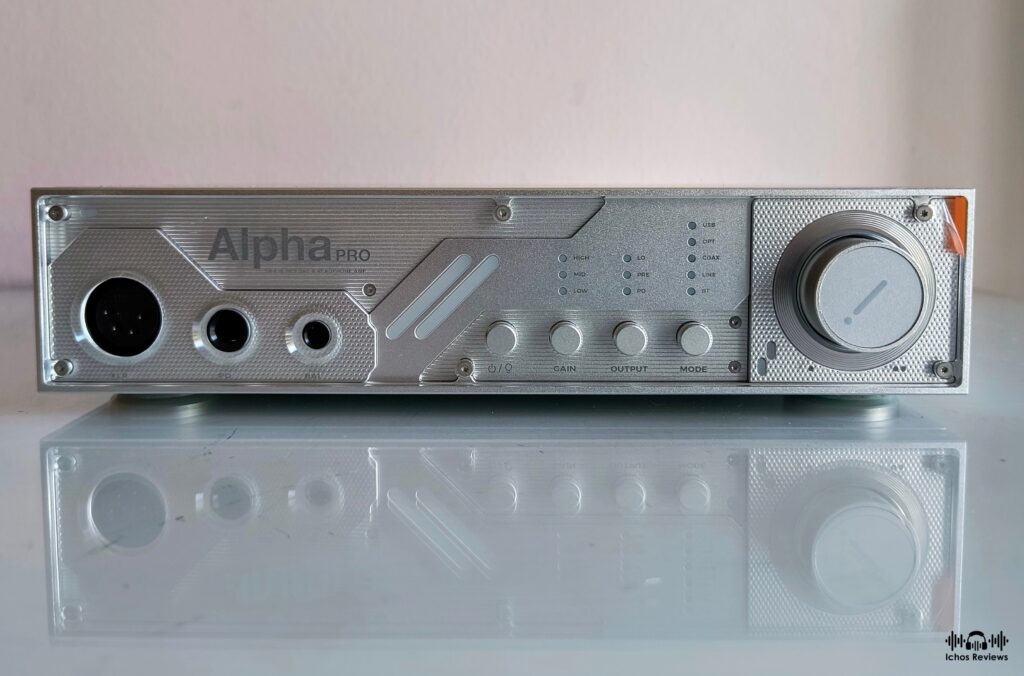
Technical highlights
The Alpha Pro employs the flagship ES9039MSPRO DAC chip by ESS with an in-house developed “SIGMA DAC” topology that uses an 8-channel differential signal summation for each channel, a method that reduces output impedance by four times and noise by 75%. For people obsessed with measurements, the Alpha Pro has some impressive numbers to show with 133dB of DR and -124dB THD+N.
The device incorporates a separate XU-316 USB receiver, supporting sampling rates up to 768kHZ/32bit PCM, native DSD512 and MQA decoding. It also features fully isolated digital and analog signal processing while it eliminates jitter through 32-bit noise shaping and a proprietary “Zero-Jitter Clock” architecture that is based on three femtosecond oscillators. Two for the local USB clocks and one Voltage Controlled Crystal Oscillator (VCXO) for the second Phase-Locked Loop (PLL) which reduces jitter to just 15 picoseconds, ten times lower than conventional designs.
The digital and analog modules are physically separated through the use of a four-layer PCB and independent ground planes. The use of shielded blocks and star-quad power routing ensures zero crosstalk between the digital signal processing and the DAC conversion.
The Alpha Pro’s headphone amplifier features 32 discrete transistors across four channels. The circuit achieves an output impedance of less than 0.1Ω and total harmonic distortion (THD) of just 0.0001% while it delivers 6000mW per channel at 32Ω without any dynamic compression.
D&A has paid special attention to the design of the linear power supply that is based on two low-noise power modules by Mean Well with four discrete regulator circuits.
Last but not least, D&A has opted to use an NJU72315 analog volume control plus a groundbreaking analog input circuit that is directly routed into the amplifier without further processing.
You can read more technical information here.

Design and build quality
The Alpha Pro has a modern design with clean and straight lines where the focus elements are the transparent frame at the front face and the numerous LEDs behind it. The layout is classic without a display, just press buttons and a rotary volume knob to help do the adjustments.
The full aluminum chassis is well made and smoothly finished in a silver matte color. The design doesn’t really break new ground but the truth is that the appearance of Alpha Pro is unique while the device is compact sized for desktop use.
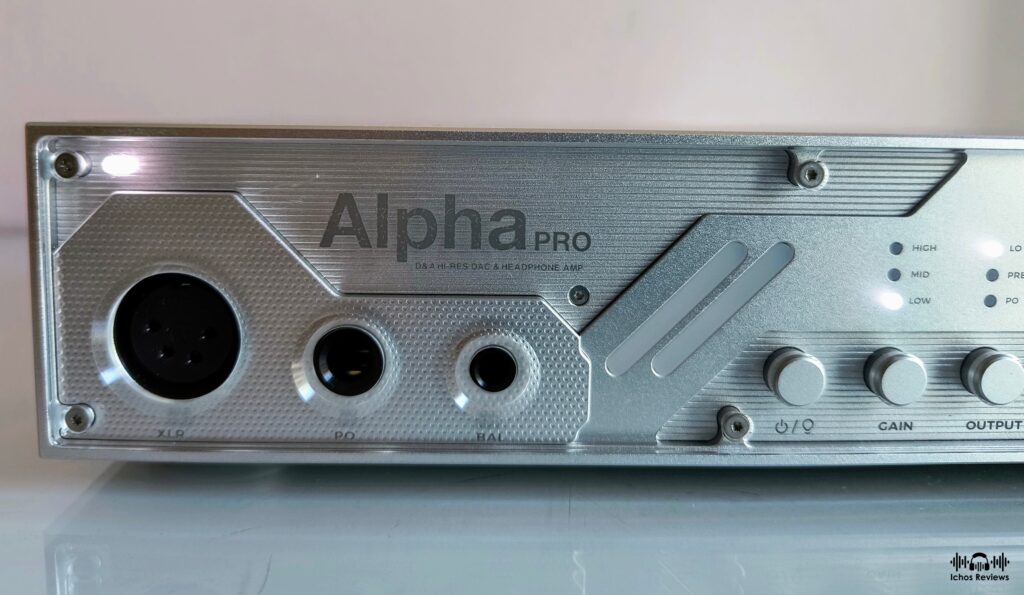
Connectivity and layout
The DAC section of the D&A Alpha Pro includes optical, coaxial and type-C USB digital inputs plus wireless Bluetooth connectivity through the QCC5125 chip that supports the LDAC and aptX HD high resolution codecs. The Alpha Pro also has a separate RCA analog input where you can connect devices, like CD players and phonos.
All these inputs are located at the back of the unit, together with the XLR and RCA analog outputs, the AC inlet, the power switch and a very nice concealed Bluetooth antenna that I much prefer over the typical protruding ones.
The three headphone sockets (4-pin XLR, 4.4mm and 6.35mm) are located at the left side of the front panel, together with four buttons and the volume control wheel. The front panel also houses various notification LEDs and two LED stripes on a parallel arrangement that are the centerpiece element of the Alpha Pro’s design. The volume control wheel is also surrounded by a LED light ring that indicates the volume level.
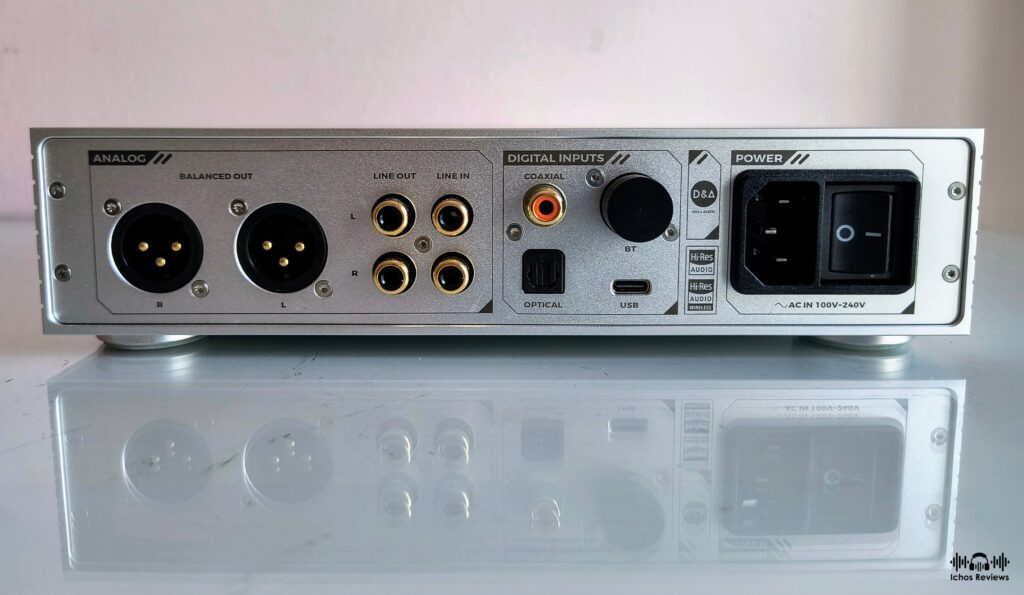
Operation
The Alpha Pro is simple to operate thanks for the four dedicated buttons and the useful notification LEDs. It doesn’t have an LCD display or a configuration menu, it is not compatible with an application and you can’t change digital filters.
The first button is for the standby function and to toggle the LEDs lighting mode, the second is to select gain (low, mid, high), the next one is for the output mode (line out, phone out, pre out) and the last one is for the input method. The gain is applicable to both the phone and the pre outs with independent settings.
The device has an analog volume control so the phone and the pre outputs share the same level of adjustment. The Alpha Pro is very powerful and is pretty easy to burn sensitive earphones. For users that use both outputs, always make sure to lower the volume before switching to headphone listening.
The LED display system
The LED display system, that is the highlight design of the Alpha Pro, has (thankfully) four operation modes that can be toggled with the first button. First mode is all LEDs lit at full intensity, trying their best to make you go blind. The other modes are a pulsing pattern, the luminosity of the LEDs follows the volume level and all LEDs off except the function notification ones.
The notification LEDs are very bright but you can dim them, however only in the always on mode. Despite the many LEDs there are only two sampling rates displayed. The USB LED will stay white for sampling rates below 192kHz/24bit and will turn red when they are equal or above this value.
Bluetooth connectivity and performance
The device will automatically enter Bluetooth pairing mode after you select the Bluetooth input method from the corresponding button. Connecting with a smartphone is an easy and straightforward procedure while the connection is stable within the same room. The audio performance with the LDAC codec enabled is very good but not up to the wired standards. Still a handy and useful feature for people that don’t like to mess with cables.
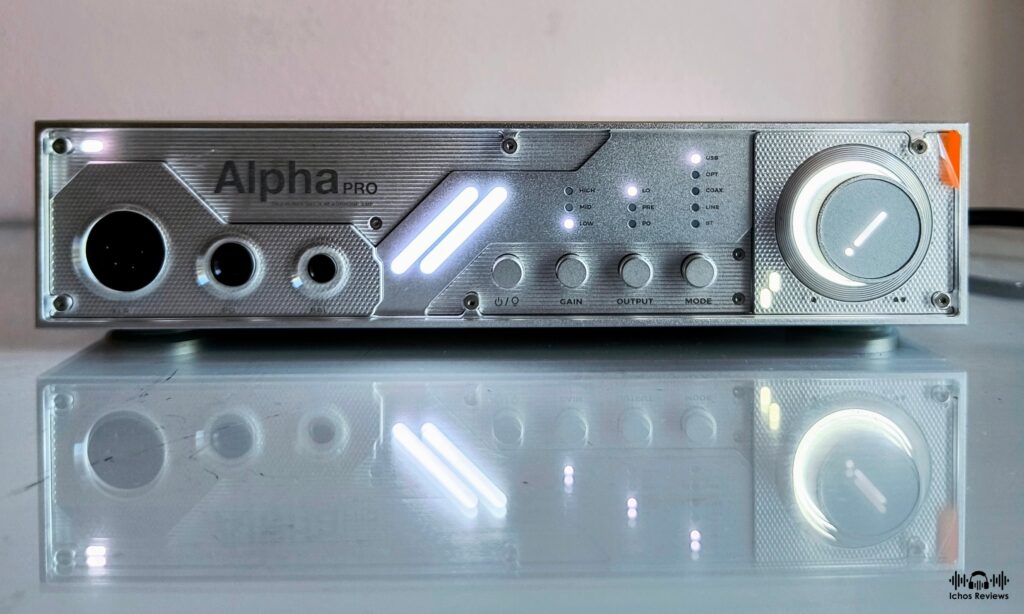
Power output and noise
The D&A Alpha Pro has a very powerful headphone amplifier that is capable of delivering up to 6W*2/32Ω from its balanced output, plenty of power to drive the most demanding headphones. At the same time, the low gain has the right volume curve and is silent enough for use with sensitive earphones.
For easy to drive headphones like the Meze Audio Poet or the Aune SR7000, the low gain was more than enough, I have only reached for high gain to test the Susvara. The chassis gets quite warm but not too hot. To evaluate the direct DAC line output of the Alpha Pro, I have used the Aune S17 Pro Evo headphone amplifier with headphone cables made by Lavricables.
Listening impressions
The D&A Alpha Pro is a device made to measure as best as possible, following the Chi-Fi trend, but it has an ace under its sleeve to make it sound similar yet different enough from the competition. Let’s split the listening impressions into two parts.
The direct DAC line output
Starting from the pure DAC output, that completely bypasses the amplifier stage, the performance is as good and consistent with what someone would have expected from such a top measuring device.
The analog output of the ES9039MSPRO DAC chip after the D/A conversion is delivered in its purest form as it only passes through the I/V and LPF stages that are implemented with high quality op-amps that offer outstanding transparency.
The line output of Alpha Pro is as neutral as possible with impressive technical performance. Typical for such implementations, the sound is crystal clear and transparent with excellent fidelity and precision across the whole frequency range. Extremely pure and completely achromatic, it is also a little clinical and sterile sounding without too much analog timbre. However, the sound is not as cold or bright as someone might have expected because the new ES9039MSPRO DAC chip is considerably less edgy and digital sounding than its previous generation predecessor.
The bass is deep, fast and controlled with top notch layering and definition but also a touch dry and not that full bodied. The mid-range has crystalline clarity and fantastic articulation, while the treble is airy and energetic with lightning fast transients. The sound signature is not boring or analytical and the tonality is realistic but not too harmonically diverse or organic.
The Alpha Pro is especially resolving for the category with impressive detail retrieval that can only be compared with much more expensive devices. The soundstage is expansive and spacious (especially from the balanced output) with class leading imaging. It might not be that holographic or layered but it can easily communicate the size of the ensemble and sound grand and imposing when needed.
Mixing and matching
With such kind of audio transparency you can easily match the DAC section of the Alpha Pro with various amplifiers or active speakers to fine tune and shape the sound to your liking. The truth is that Alpha Pro alone can’t match the musicality and the level of engagement that some other DACs with special output stages can offer, but there is so much mixing and matching potential that it is unlikely that you will not find your favorite combination.
The headphone amplifier
This is the part where things get very interesting and the Alpha Pro differs from most of the “best measuring” competition as it follows a slightly different sonic path. Most similarly designed devices by brands like SMSL or Topping, usually opt for an extremely transparent and achromatic headphone amplifier that passes the sound characteristics of the DAC completely unaltered without further sonic processing. There is no right or wrong with audio and some people might like this kind of approach while others may not sympathize with such devices that tend to sound too cold and sterile.
The Alpha Pro will likely appeal to the second category because D&A decided to become creative and design a headphone amplifier with transistors instead of op-amps or the commonly used TPA6120A2 IC. D&A is certainly not the first brand to do so, the Aune S9c Pro and the Rose Technics RT-5000 easily spring to mind, but they still belong to the rarity among Chi-Fi manufacturers.
Similar yet so different
The headphone amplifier of the Alpha Pro is tuned to add the warmth and the musicality that are missing from the academic DAC output. Its sonic character is a little more natural and engaging with greater harmonic variety and a bit more of an organic timbre. The sound is more colorful and richer with fuller textures and some extra elasticity on the bass while the soundstage is a bit more holographic and deeper. At the same time, all these extra sonic characteristics are applied without takeaways in the technical performance of the DAC.
On a pure technical level, the headphone amplifier is very dynamic and impactful with contrasted dynamic swings and spare headroom with all kinds of headphones. The well designed headphone amplifier has excellent sound quality and, unlike the DAC output, it sounds more sophisticated, musical and skilful in communicating the real essence of the music.
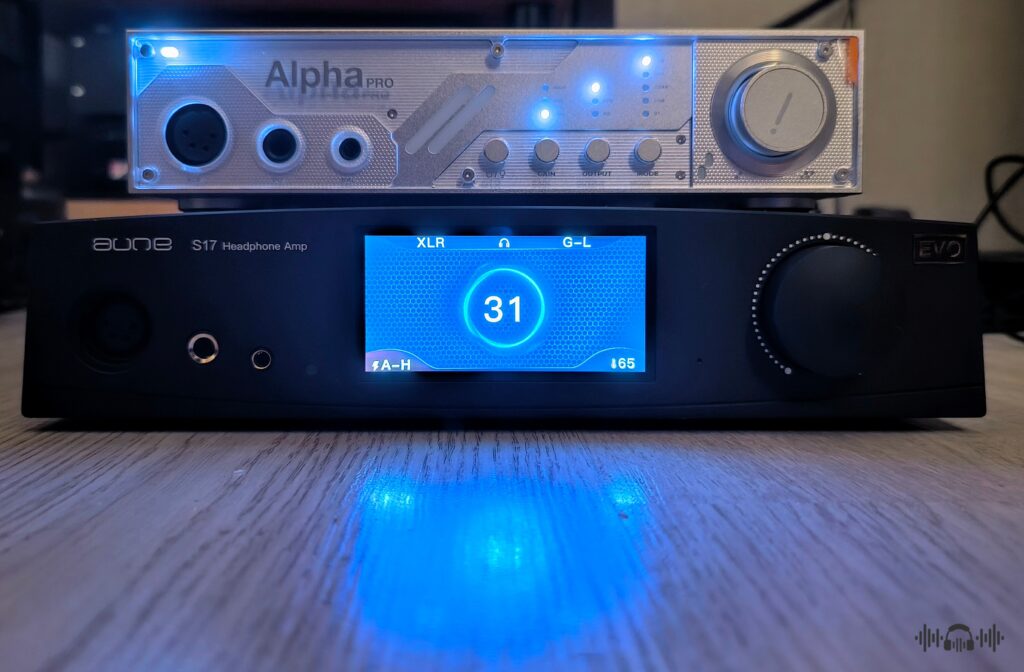
Vs the competition
The headphone amplifier of the Alpha Pro is not as organic and analog sounding as some dedicated headphone amplifiers, like the Aune S17 Pro Evo, but definitely more engaging and emotionally intense than the IC based competition. On the other hand, the DAC output is at least as pure and transparent as similar devices by SMSL and Topping, or even better because it sounds less digital and sterile than a lot of them.
It would be much better to compare the Alpha Pro with the Aune S9c Pro and the Rose Technics RT-5000 that follow the same kind of discrete design and tuning principles. Honestly speaking, these three devices sound more alike than different but the newest DAC chip that is used in the Alpha Pro is giving it a marginal edge because it is more technically advanced and at the same time less digital sounding.
Other things that should be considered have to do with the functionality and the overall design of the devices. The Alpha Pro is the only one with an analog line input but the Aune S9C Pro has an AES digital input and support for an external clock. Both the S9C Pro and the RT5000 allow the user to select filters while the S9C Pro has phone and preamplifier outputs with dedicated volume settings so it is easier to use.
The analog input
A unique function of the D&A Alpha Pro that should not be overlooked is its line level input that allows the user to connect an analog device with RCA outputs, like a CD player or a phono, and listen with to them with headphones or through active speakers. The sound quality is as good as described above so the Alpha Pro can also be used as a high quality analog headphone amplifier and preamplifier, making it an all-inclusive and very versatile desktop music hub.
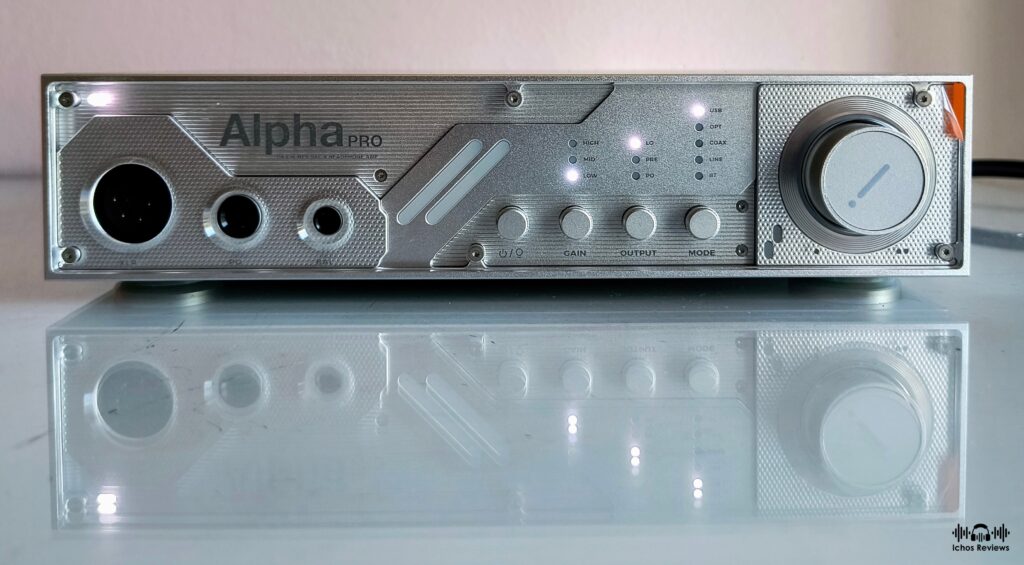
In the end
The D&A Alpha Pro is a stellar sounding all-in-one audio device that offers two distinct sound signatures. It has a puristic neutral and transparent DAC output, that is not too clinical or sterile, while it adds more warmth and harmonic richness through its headphone output, offering great mix and match potential.
Compact sized and well made with a plethora of inputs and outputs, it is also one of the few devices with an analog line input. What a debut, the D&A Alpha Pro exceeded all my expectations by offering unparalleled sonic performance and excellent connectivity at a very reasonable price, so it easily earns my highest and honest recommendation.
Copyright – Petros Laskis 2025.
+ Pure and transparent DAC line output
+ Musical and expressive headphone amplifier
+ Excellent technicalities in both modes
+ Neutral timbre with minimum digital glare
+ Class leading resolution and spatial imaging
+ DAC, headphone amplifier and preamplifier modes
+ Great mix and match potential
+ Analog input and Bluetooth connectivity
+ Powerful headphone amplifier that can drive everything
+ Exceptionally silent with excellent channel balance
+ Very well made and compact sized
+ Reasonably priced and rather affordable
- Questionable design with too many LEDs
- You can't completely disable the LEDs
- No accurate sampling rate indicator
- No remote control or LCD display
- Can't switch digital filters
- No XLR analog inputs


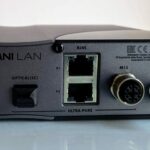
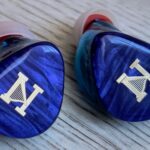
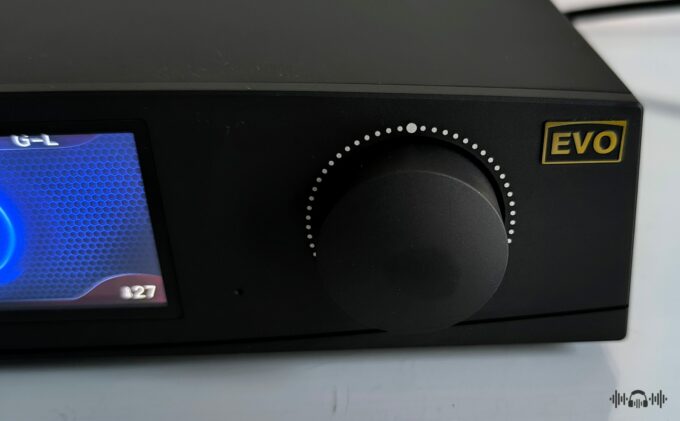
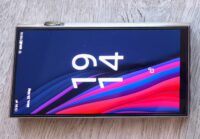
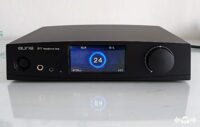
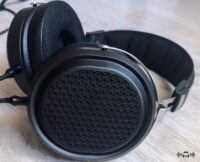

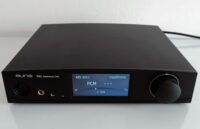
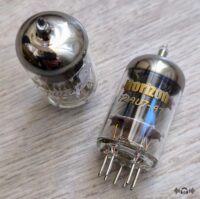
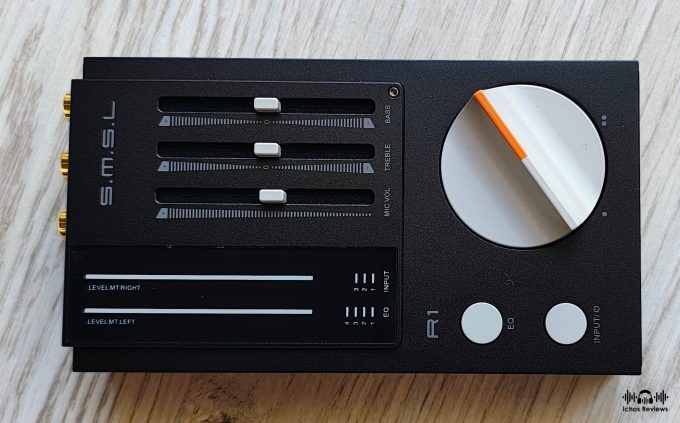
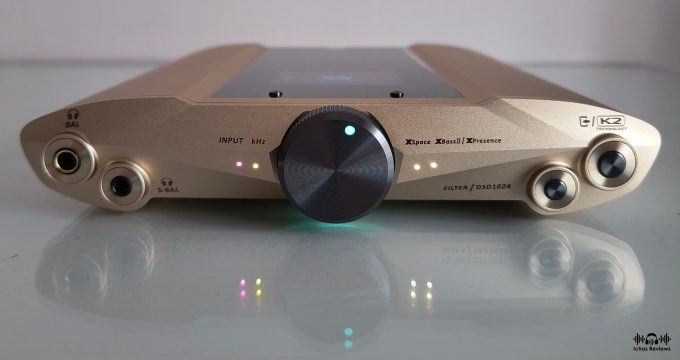
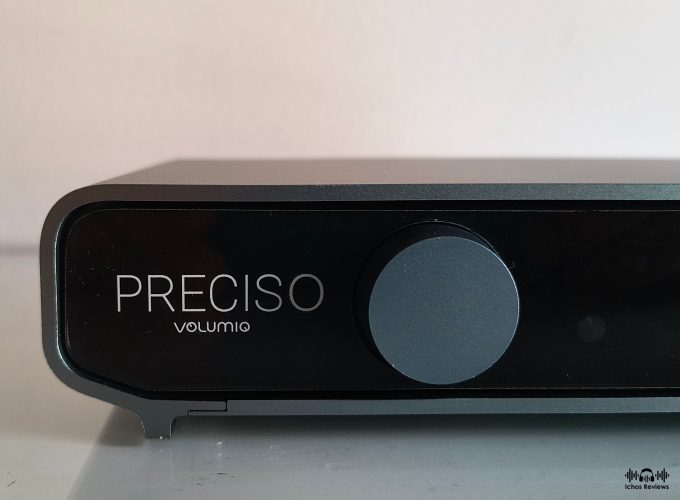
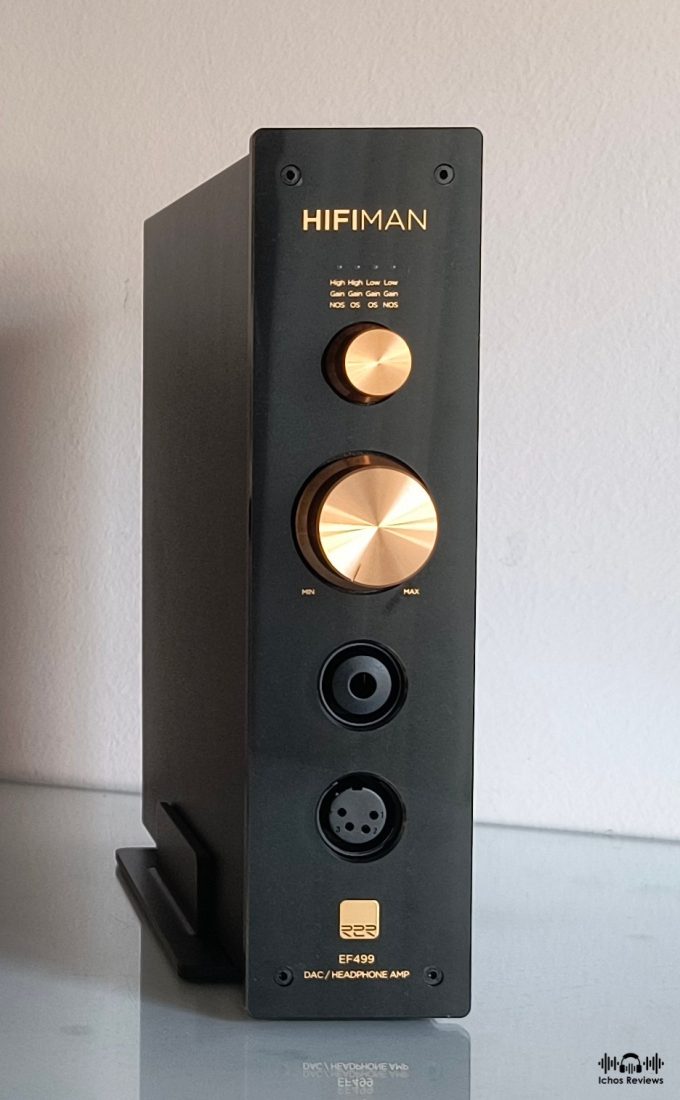
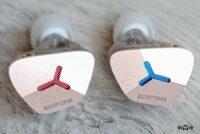
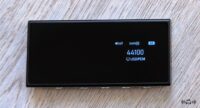
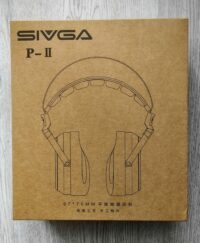


2 Comments